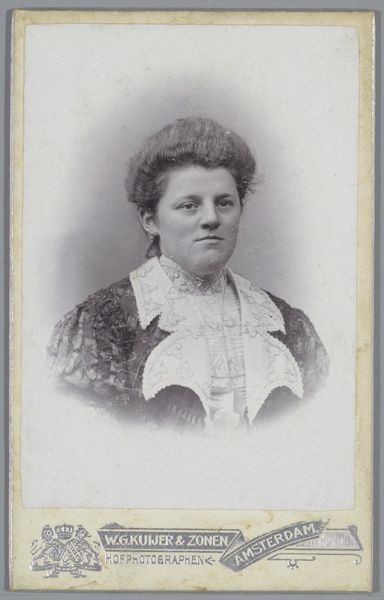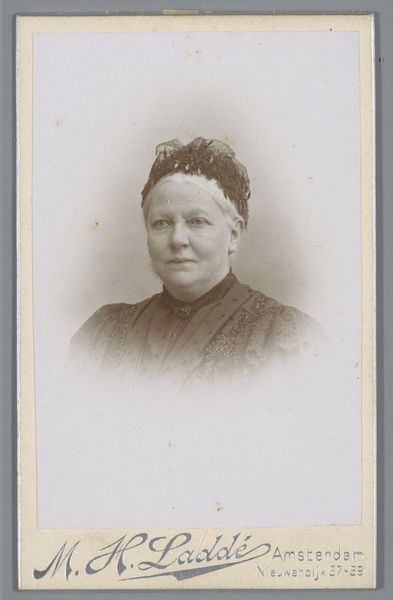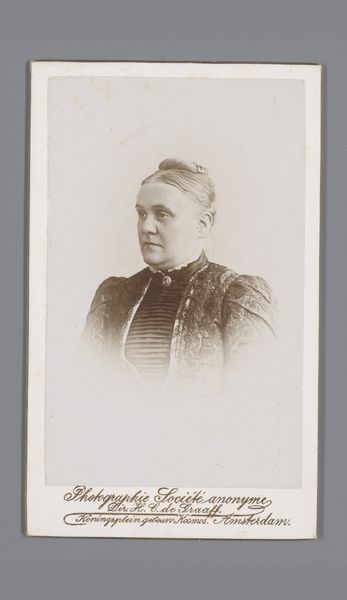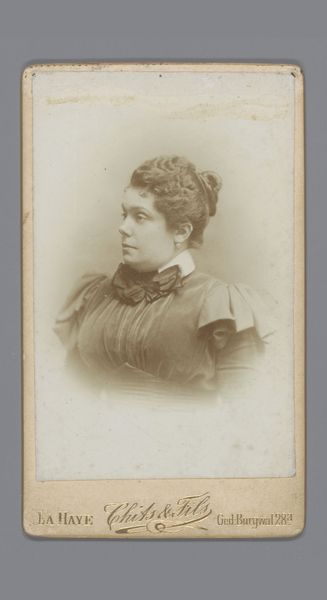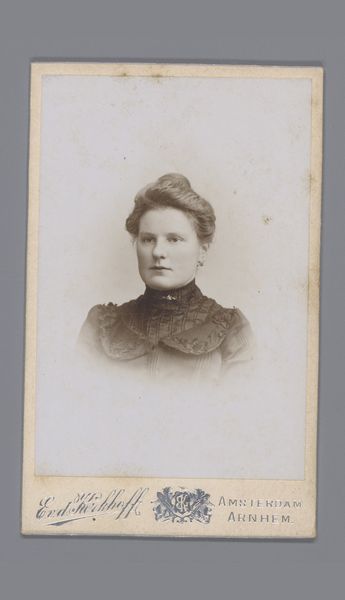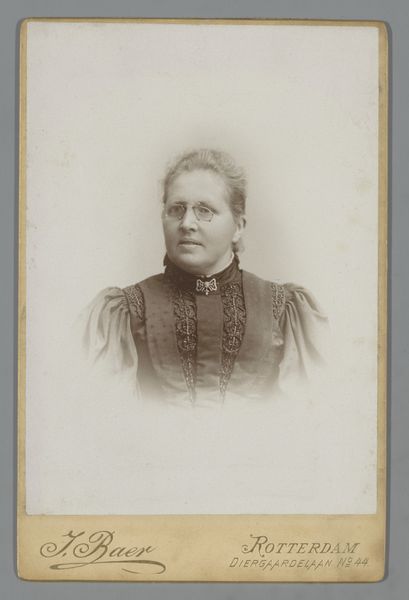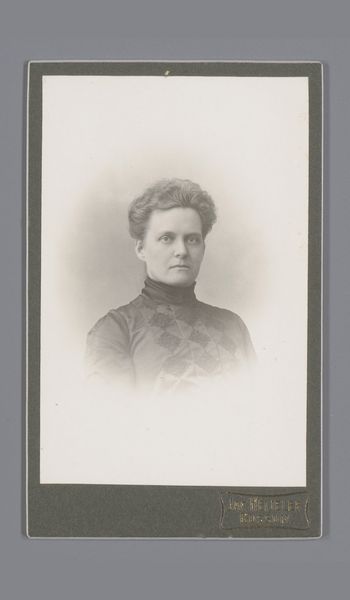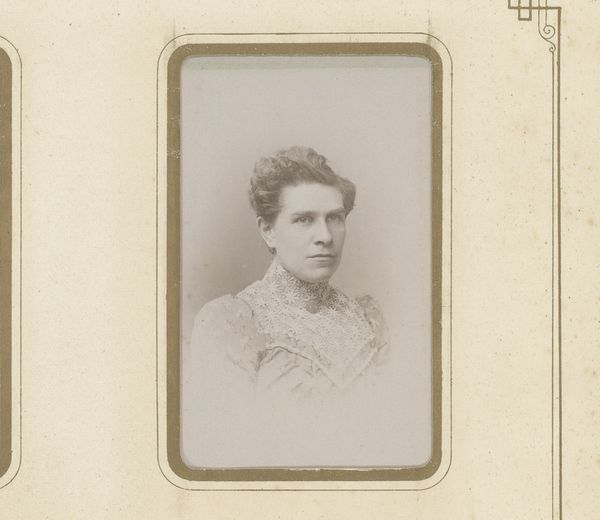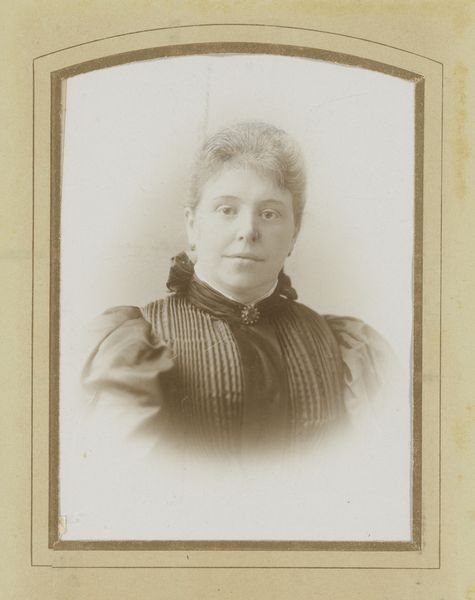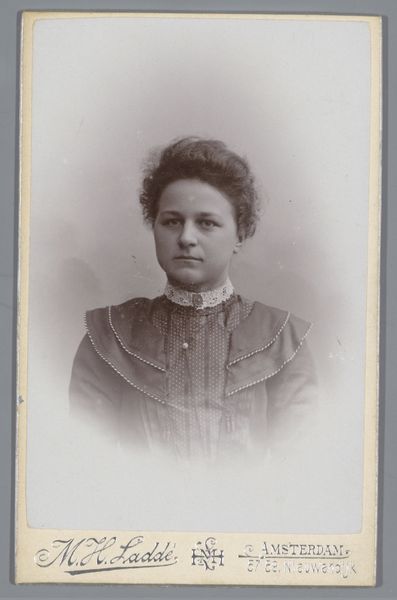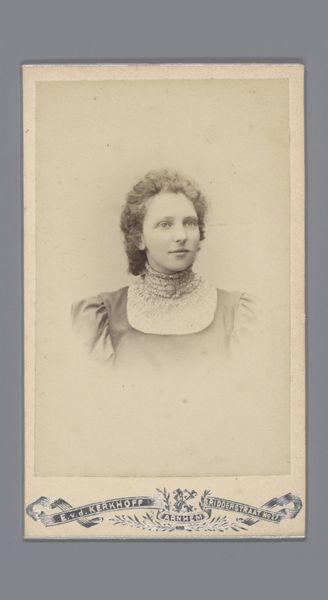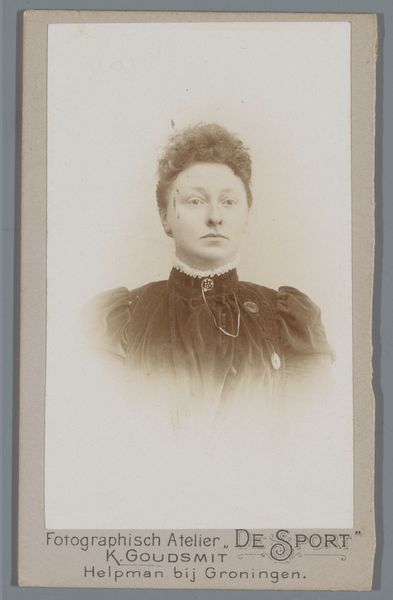
photography
#
portrait
#
photography
#
realism
Dimensions: height 105 mm, width 60 mm
Copyright: Rijks Museum: Open Domain
Curator: Good morning. Today, we’re looking at “Portret van een onbekende vrouw,” or “Portrait of an Unknown Woman,” a photograph attributed to Jac. Schotel Szn., probably created between 1885 and 1906. Editor: She seems quite stoic, doesn't she? Almost defiant, really. And the tones are so muted. It’s as if time itself is trying to fade her away, despite the clear detail. Curator: Well, studio portraits of the time were often about conveying respectability and perhaps a degree of social standing. Note the careful composition and pose. It's intended to present her in a certain light. We may not know who she is, but her image tells us about the visual language of the late 19th century. The photographic firms offered recognizable patterns to play this role. Editor: It is so formal. But look at the huge lace bow! It feels… I don’t know… a little absurd against that seriousness, doesn’t it? Almost like she has a secret joke only she gets to laugh at. Or a signifier to what was expected of women at the time, forced into this strange garb, literally tied in place. Curator: The lace certainly is elaborate. Remember though, these details were meticulously chosen and reflect the rising bourgeois taste and consumer culture of the period. Even “anonymous” portraits reinforce specific class values and gender norms by communicating social expectation, and here the consumer's financial reach through attire. Editor: Hmm. But look closer into her eyes—there’s a realness there that cuts through all the artifice. You can feel the humanity of the individual resisting the flattened, social definition. That’s the poetry for me: a quiet rebellion blooming inside constraint. And as you consider how that plays out, you remember this portrait probably served some intimate role for the individual it represents, outside these conversations about social power. Curator: Precisely! These images acted as tokens, connecting people through space and time, shaping not just personal memories but public memory. The formal pose becomes a conduit to connect generations. Editor: Beautifully said. It’s more than just a historical record—it’s a whisper across time, isn't it? Curator: Yes, and photographs offer a way to reclaim untold personal narratives and find familiar traces of what made past humans and society at large.
Comments
No comments
Be the first to comment and join the conversation on the ultimate creative platform.
